
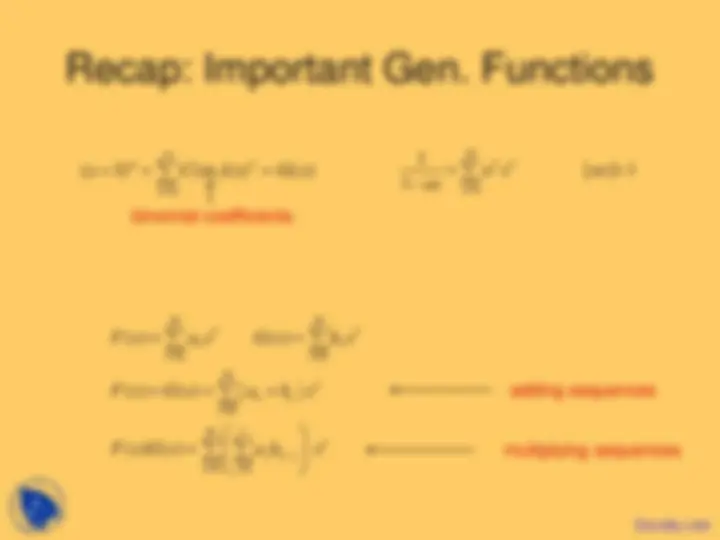
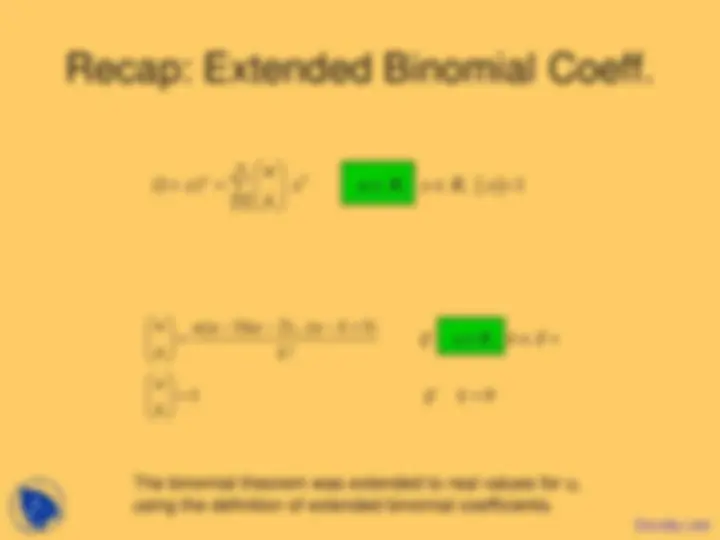
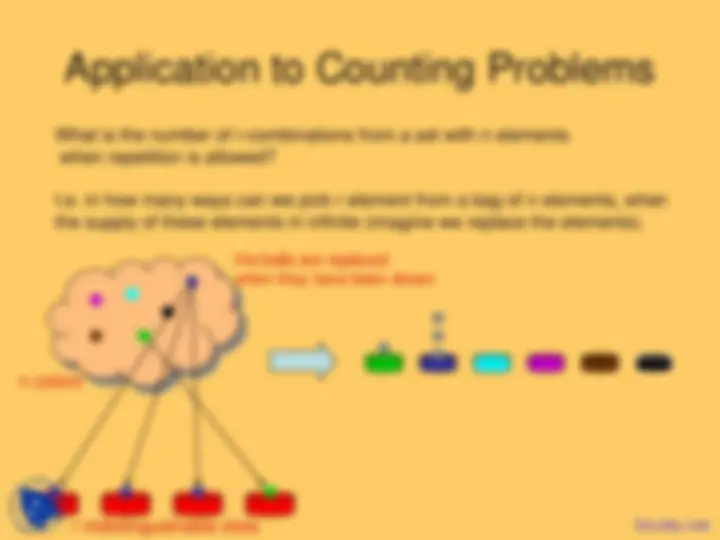
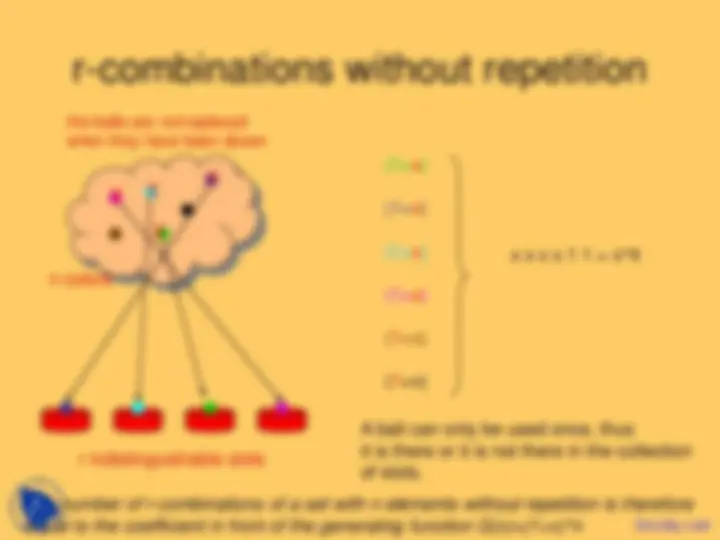
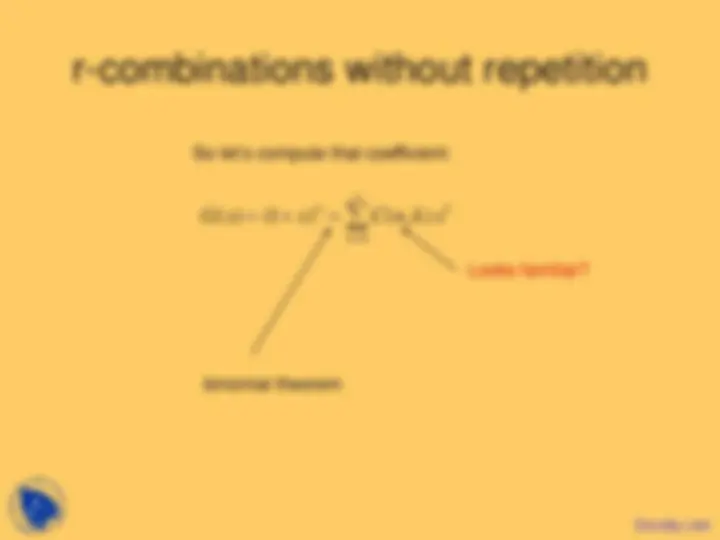
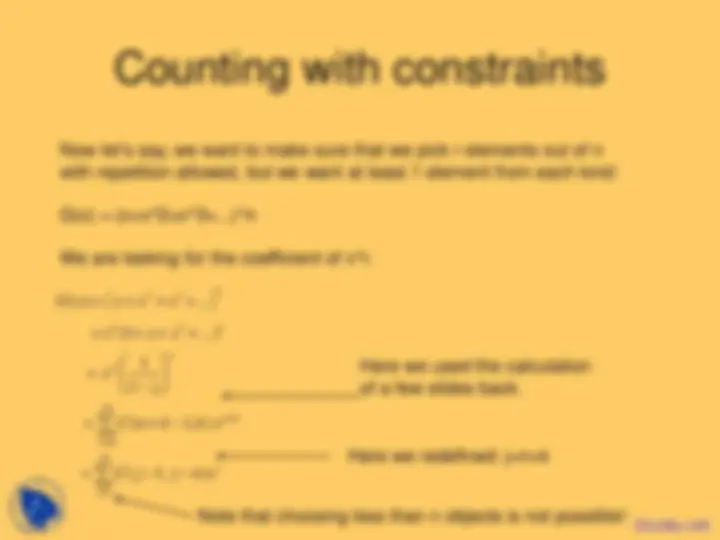
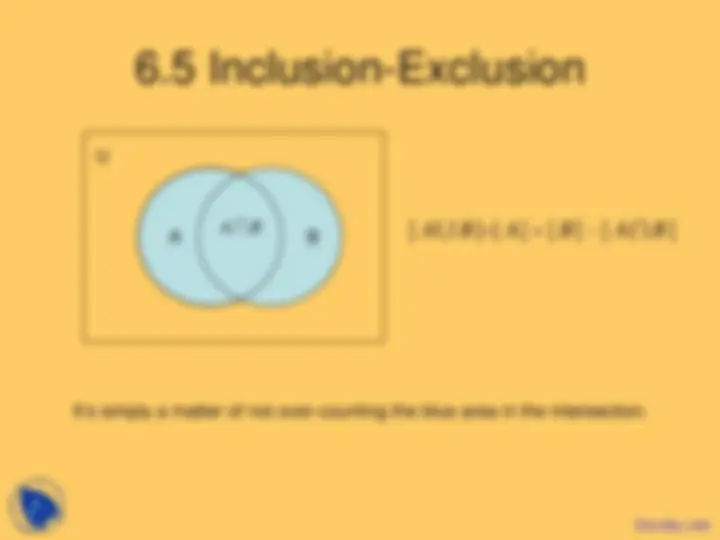
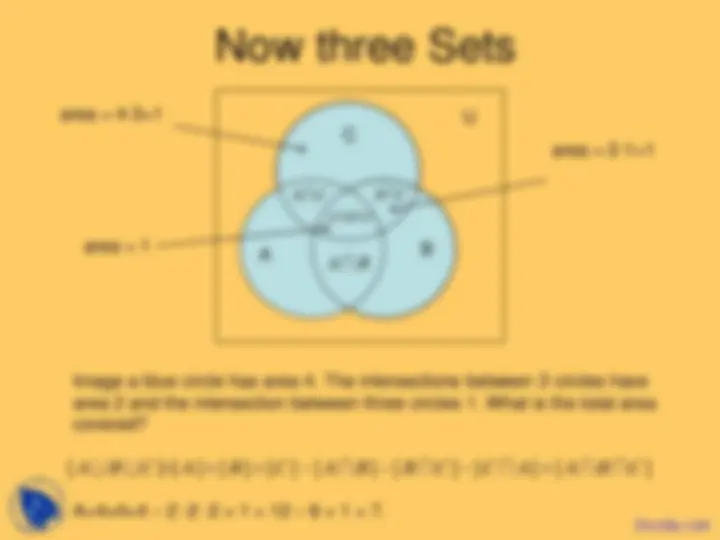
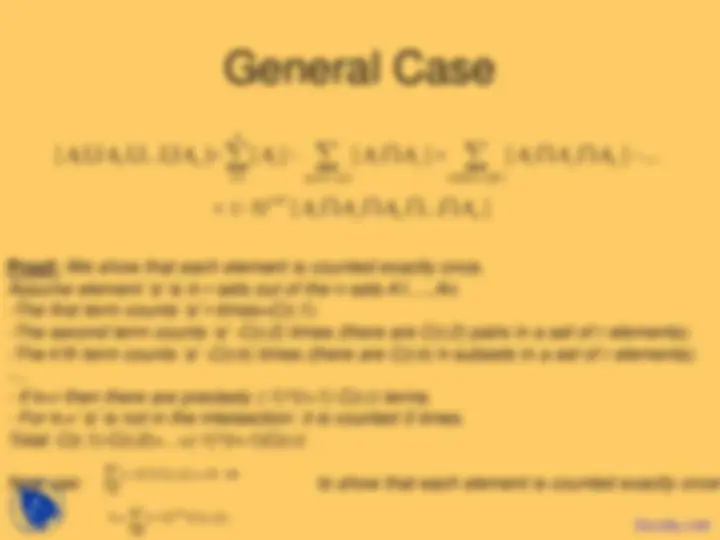


Study with the several resources on Docsity

Earn points by helping other students or get them with a premium plan


Prepare for your exams
Study with the several resources on Docsity

Earn points to download
Earn points by helping other students or get them with a premium plan
Community
Ask the community for help and clear up your study doubts
Discover the best universities in your country according to Docsity users
Free resources
Download our free guides on studying techniques, anxiety management strategies, and thesis advice from Docsity tutors
Generating functions and their application to counting problems, specifically r-combinations with and without repetition. It covers the binomial theorem and its extension to real values, as well as recurrence relations and counting with constraints.
Typology: Slides
1 / 15

This page cannot be seen from the preview
Don't miss anything!










0 1 0
( ) ... ...
k k k k k
G x a a x a x a x
∞
=
Generating functions are defined by a sequence as follows:
Thus: For every sequence there a generating function and for
every sequence there is a generating function.
Idea: Use properties of functions to solve problems about sequences.
0
(1 ) , , | | 1
u k
k
u x x u R x R x k
∞
=
∑
( 1)( 2)...( 1) , !
1 0
u (^) u u u u k if u R k Z k k
u if k k
− − − + =^ ∈^ ∈^ +
=^ =
The binomial theorem was extended to real values for u, using the definition of extended binomial coefficients.
What is the number of r-combinations from a set with n elements when repetition is allowed?
I.e. in how many ways can we pick r element from a bag of n elements, when the supply of these elements in infinite (imagine we replace the elements).
n colors
r indistinguishable slots
the balls are replaced when they have been drawn
Docsity.com
2 3
0
0 0
0
1 ( ) (1 ...) 1
(1 ( )) ( )
( 1) ( 1, )( 1) ( 1)
( 1, )
n n
n k
k
k k k k k
k k
k
k
G x x x x
n x x k
n x C n k k x k
C n k k x
∞ −
=
∞ ∞
= = ∞
=
= + + + = −
− = + − = (^) −
− = (^) − = + − − −
= + −
Now let’s compute that coefficient:
Looks familiar?
the balls are not replaced when they have been drawn
X
X
X
X
r indistinguishable slots
n colors
(1+x)
(1+x)
(1+x)
(1+x)
(1+x)
(1+x)
A ball can only be used once, thus it is there or it is not there in the collection of slots.
x x x x 1 1 = x^
The number of r-combinations of a set with n elements without repetition is therefore
equal to the coefficient in front of the generating function G(x)=(1+x)^n Docsity.com
Now let’s say, we want to make sure that we pick r elements out of n with repetition allowed, but we want at least 1 element from each kind:
G(x) = (x+x^2+x^3+...)^n
We are looking for the coefficient of x^r.
2 3
2
0
( ) ...
(1 ...)
1 1
( 1, )
( 1, )
n
n n
n n
n k k
j j n
G x x x x
x x x
x x
C n k k x
C j j n x
∞
= ∞
=
= + + +
= + + +
= (^) −
= + −
= − −
∑
∑
Here we used the calculation of a few slides back.
Here we redefined: j=n+k
Note that choosing less than n objects is not possible!
1 0
0 0 1 0 0 1 1 0
0 0 0 0
3 2.
( ) 3 3 3 ( )
( ) 3 (2 3 ) 1 3
k k
k k j k k j k k j
k k k k
k k
a a a
G x a a x a a x a x a x a xG x
a G x a x x x
− ∞ ∞ ∞
− = = = ∞ ∞
= =
= =
= + = + = + = + ⇒
= = = × −
therefore we have found that a[k]=2x3^k is the solution!
A (^) A B
U
It’s simply a matter of not over-counting the blue area in the intersection.
A B
C
A B
A C B^ C A B C
U
Image a blue circle has area 4. The intersections between 2 circles have area 2 and the intersection between three circles 1. What is the total area covered?
A=4+4+4 – 2 -2 -2 + 1 = 12 – 6 + 1 = 7.
area = 2-1=
area = 1
area = 4-3=
| A B C | |= A | + | B | + | C | − | A B | − | B C | − | C A | +| A B C|